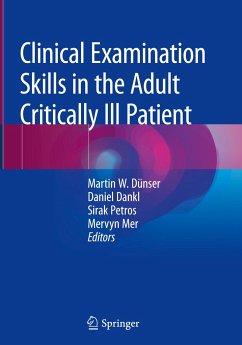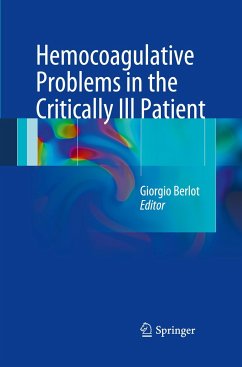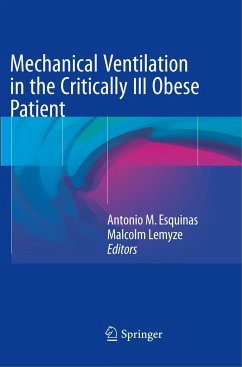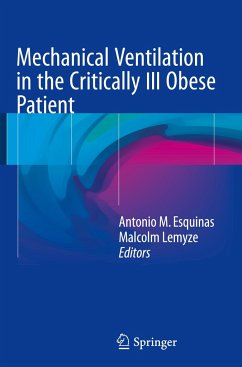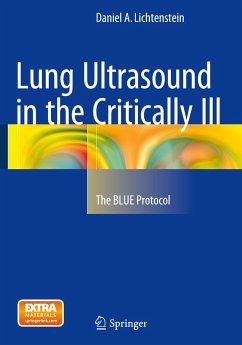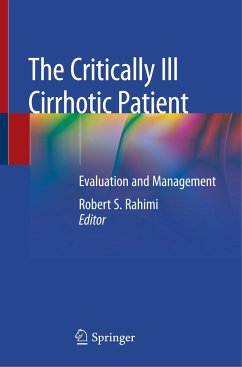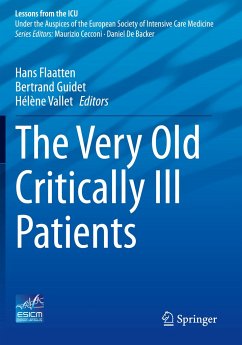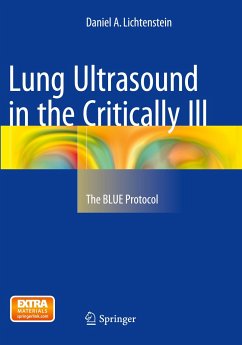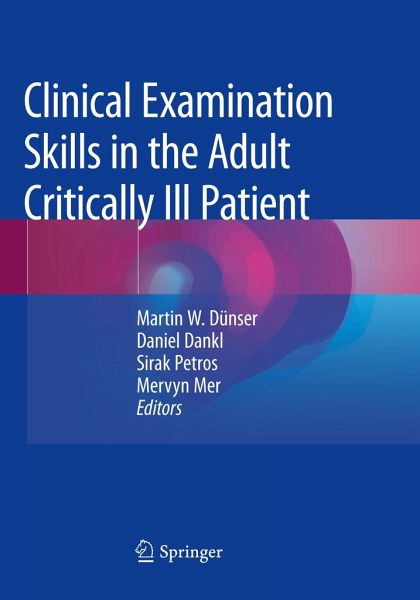
Clinical Examination Skills in the Adult Critically Ill Patient
Versandkostenfrei!
Versandfertig in 6-10 Tagen
83,99 €
inkl. MwSt.

PAYBACK Punkte
42 °P sammeln!
This well-illustrated book provides detailed guidance on all aspects of physical examination in patients requiring emergency or intensive care. After an introductory section covering basic principles and the recognition of pre-terminal signs, the approach to examination of individual organ systems is clearly explained. Examination schemes are then presented for particular conditions or settings, including respiratory distress, shock, neurological disease, trauma, suspected infection, and cardiac arrest.The skill of physical examination has become the forgotten art of medicine in both undergrad...
This well-illustrated book provides detailed guidance on all aspects of physical examination in patients requiring emergency or intensive care. After an introductory section covering basic principles and the recognition of pre-terminal signs, the approach to examination of individual organ systems is clearly explained. Examination schemes are then presented for particular conditions or settings, including respiratory distress, shock, neurological disease, trauma, suspected infection, and cardiac arrest.
The skill of physical examination has become the forgotten art of medicine in both undergraduate and postgraduate studies. Furthermore, most books on the topic have so far focused on examination practices applicable to non-critically ill patients. In emergency and intensive care medicine, however, a different approach and sometimes also different examination techniques are required due to the life-threatening disease process. In summarizing knowledge and providing guidance on physical examination in this specific subgroup of patients, this book will meet the needs of all physicians and allied health care professionals involved in the care of critically ill patients.
The skill of physical examination has become the forgotten art of medicine in both undergraduate and postgraduate studies. Furthermore, most books on the topic have so far focused on examination practices applicable to non-critically ill patients. In emergency and intensive care medicine, however, a different approach and sometimes also different examination techniques are required due to the life-threatening disease process. In summarizing knowledge and providing guidance on physical examination in this specific subgroup of patients, this book will meet the needs of all physicians and allied health care professionals involved in the care of critically ill patients.



